
views
New Delhi: Sitting on a thin mattress in one corner of the New Mustafabad Eidgah, Kashif is engrossed in his English lessons inside a palpably sullen relief camp in northeast Delhi. His family was uprooted from Shiv Vihar Gali Number 21 after their home was set on fire by rioters two weeks ago.
The five-year-old diligently studied as a fracas broke out between two women over collection of relief material. They were loud, but his attention didn’t waver. “English is his favourite subject,” his mother said as her eyes welled up. “He always got ‘excellent’, ‘very good’ in his report cards, but everything is reduced to ashes now. We are so poor; how do we rebuild our son’s dreams?” she asked.
Kashif has not been eating properly since the February 25 carnage. He also does not sleep at night, and spends his day “writing letters to Allah”. His mother rued that his boy hasn’t shed a tear even a week after the riots. He has mostly been numb, contrary to his playful nature. Kashif’s friends were around him, but he spoke to none in the camp.
The Eidgah has been converted into a relief camp by the Delhi government, in association with the Wakf Board, to shelter hundreds of riot victims who have been displaced in the course of the communal violence.

The entrance to the relief camp.
Riots Through the Eyes of Children
Twenty minutes into the visit, Kashif revealed English isn’t the only thing he is passionate about. “I want to become the chief minister to help my country,” said the boy said as his eyes glared for the first time. He then pulled out a chit from under his mother’s dupatta, which was folded and used as a pillow, that had a heart-rending message: “God, please make everything fine again.” The child is in upper kindergarten (UKG).
When the rioters came for Kashif’s house, they blew the first gas cylinder in his study room after cutting open the main door to the entrance. The family had moved up to the terrace by then and, one hour into the havoc, they were forced to run for their lives.
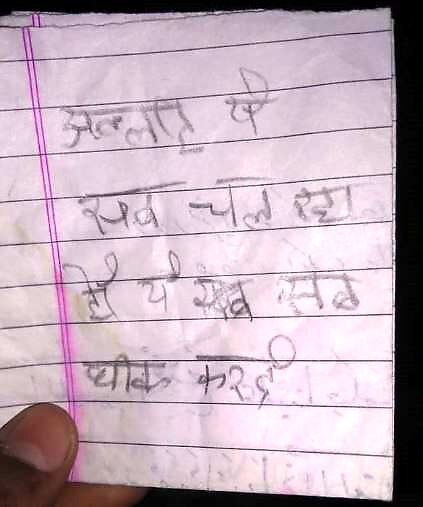
One of the many letters that Kashif "wrote to Allah"
Meanwhile, 12-year-old Ifra, a student in Rajdhani Public School, which suffered heavy destruction in the course of the riots, said she was writing her social studies examination when the turmoil began on February 24 around noon. “There was horrible noise outside. During the exam I wasn’t thinking about my paper, but how to be alive after I left the classroom, would I ever reach home, was my mother even alive. And then we also heard buses burning at the bus stand outside my school. We were too scared and I left questions worth over 25 marks unanswered. In no time, they began pelting rocks at our school,” the girl said. She was later rescued by five of her cousins and missed three examinations since the riots.
When she reached home, it was already ransacked. A day later, it was burnt down.
“Since class 2, I wanted to become a doctor and open a hospital for poor people like us. How will I become one now? They burnt my books. My dreams are shattered and all I think of now is my house burning,” said the class 7 student. Beside Ifra lay her three-year-old cousin, who has been running a fever for the past six days. The toddler keeps repeating only one word, “ghar (home)", her mother said, caressing her baby’s head.
Inside a Child’s Mind
As one entered the tent, a pile of unkempt clothes were heaped together and kept aside for the victims, and behind it was a makeshift washroom that had a long queue, showing the vulnerability of the riot-torn children.
A camp is not a home, said Ifra. “Since we fled, I haven’t changed my clothes,” revealed the girl, who likes to wear “dresses, gowns and umbrella frocks” tailor-made by her mother.
Like Ifra and Kashif, many other students whose families have suffered in the riots are also living through the same horror.
On Sunday night, 14-year-old Faraz had completed his mathematics homework, which had to be submitted on Tuesday. “I took three days to complete the problems because I am weak in maths. Par main check nahi kara paya kyunki sab jal gaya. Bohot bura laga (but I could not get it checked because everything got burnt. I felt horrible),” said Faraz, a class 8 student of Manav Convent Public School, fiddling with his mother’s scarf as she prayed. Their house, too, was torched.
“It’s a shame that we could not protect our own children. They are the unnecessary victims,” an elderly woman, a former resident of Karawal Nagar, said while staring at the grim faces of the children narrating the brutal events they witnessed unfolding in front of their eyes.
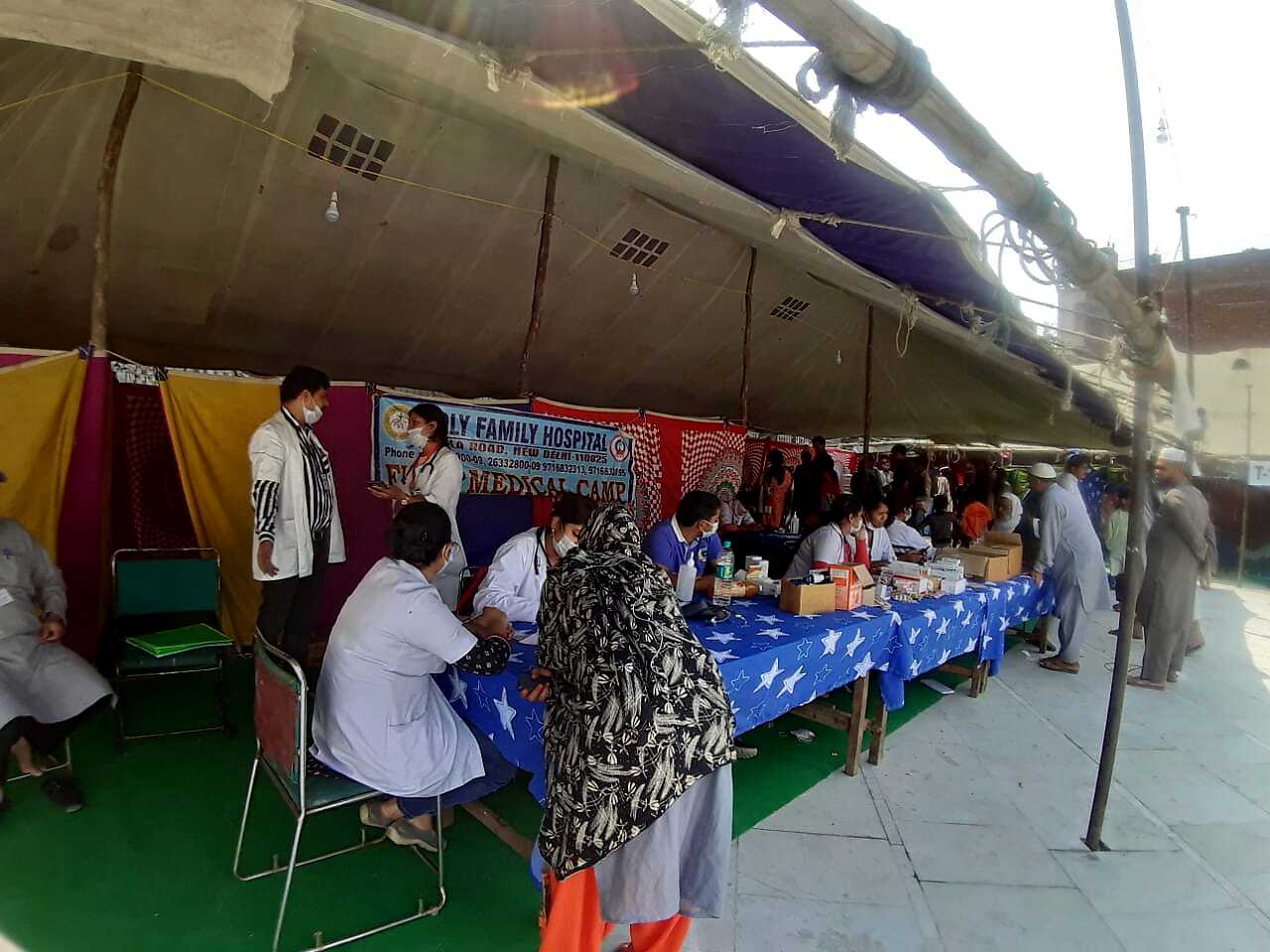
A medical facility set up for the riot victims inside the relief camp.
At least four schools were vandalised and burnt in northeast Delhi during one of the most gruesome riots in decades.
Most of the children News18 met recalled the explosion of gas cylinders inside their homes, which they said have been indelible in their minds. The destruction of local mosques and attack on their schools were among the other disturbing events that the children recapitulated.
“They should have thought that even we want to become something in life. This time a week ago I was in my school, studying, but now we are here in this camp. Sitting and sleeping with everybody, without any books. I was studying to build a future and now I missed so many exams. Hamein kuch banne ka haq hai ki nahi (don't we have the right to become something)?” asked Alisha, a Judo practitioner who was set to participate in her school tournament on that day.
Alisha and her family were displaced after a mob attacked their neighourhood near Shamshan Ghat, Shiv Vihar, and began ransacking their home. The family is now uncertain if the house remains or was set afire.
“We feel terrible about this sudden change of environment. I want to go home and study, go to school and participate in Judo. I always wanted to become a soldier; I feel happy when I see women soldiers,” said the class 7 student. “She came third in her class in the December exams,” her mother added. “Even yesterday, she played with the neighbour’s child and now we are here,” she said.
As News18 moved to Bhagirathi Vihar, another riot-hit region in northeast Delhi, we found the roads still strewn with stones and a large portion of the wall adjoining the canal broken. The pattern of the damage was similar: locks of houses broken, then marauded and burnt in a line.
Inside one of the lanes was Anish’s house. “This four-year-old saw everything. It’s unbelievable,” said the child’s uncle who sat beside him with a hand fan.
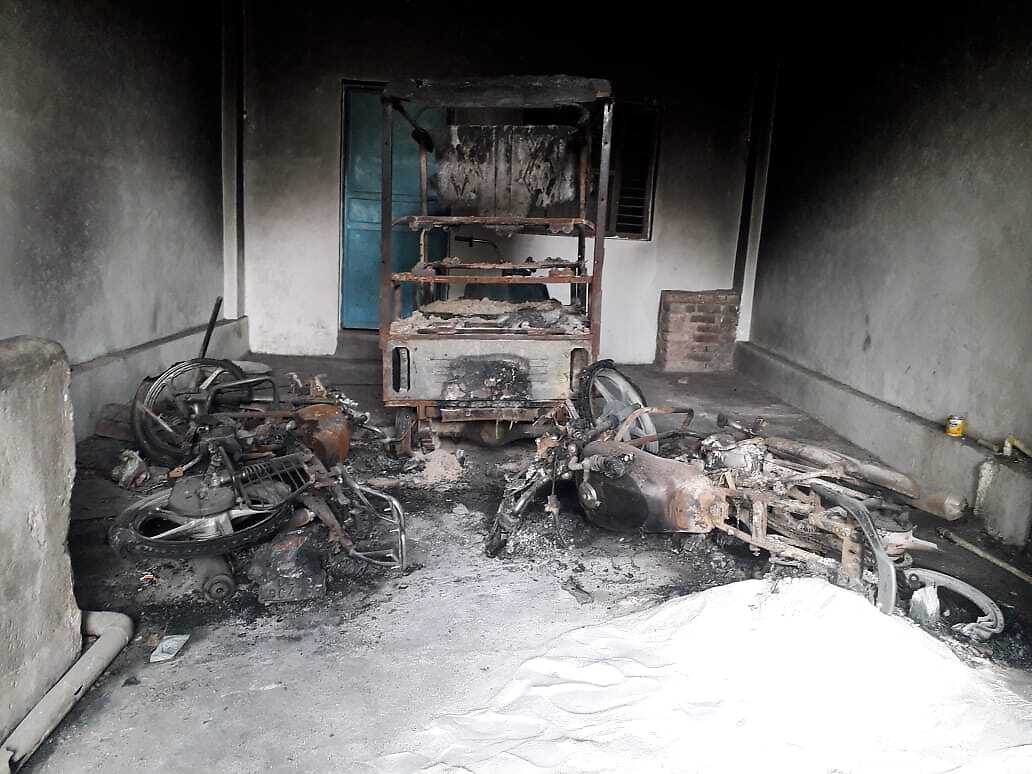
A completely gutted electric-rickshaw garage beside Anish's house in Bhagirathi Vihar.
Rioters barged into Anish’s house and burnt his father and uncle’s motorcycle in front of him. The boy has not been going to school ever since the violence broke out and has been looking for his missing toys and his tricycle that was gutted along with other vehicles.
While Anish looks for his toys, four-year-old Sama believes her father “has gone out to get gifts” for her. Her 28-year-old father, Asim, and 17-year-old uncle, Faizal, were murdered on February 26 near Ganga Vihar, just a few minutes from their house that is situated in the crowded byways of Old Mustafabad. Asim left behind two daughters and his pregnant wife, apart from his elderly parents.
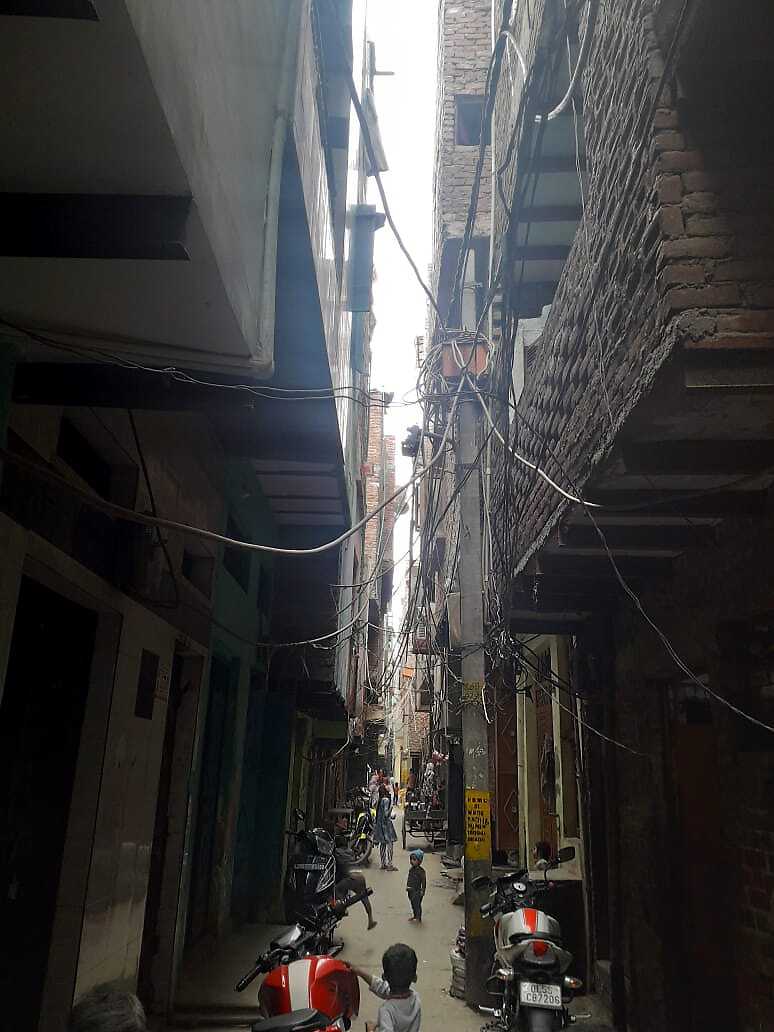
A narrow lane leading to Sama's house in Old Mustafabad.
The Worst Sufferers of Violence
A 2005 UNICEF report on “Childhood Under Threat” define children as among the first and worst affected by conflict, whether directly or indirectly. Even if they are not killed or injured, they can be left with deep emotional scars and trauma from direct exposure to violence or from dislocation, poverty, or the loss of loved ones, said the report.
“Children witnessing something like slums burning, people getting butchered in front of their eyes, becomes source for a psychological trauma. Even for adults it is difficult to cope, but they soon go about their lives and have better coping mechanisms. However, it is different for children. Their symptoms of trauma take time to show and eventually aggravate,” Dr (Prof) RP Beniwal, senior psychiatrist at Atal Bihari Vajpayee Institute of Medical Sciences & Dr Ram Manohar Lohia Hospital, New Delhi, told News18.
In an individual case study of the children that News18 spoke to, Dr Beniwal threw light on the impact of psychological trauma emanating from gruesome episodes of riot-related violence.
“Not necessarily do children show symptoms of mental illness immediately after suffering from the disaster. We have a name for this type of trauma — post-traumatic stress disorder (PTSD), which is the stress that follows after a traumatic experience. For these children, these events definitely leave a mark on their minds (psychological sequel). When we experience trauma in the formative years of childhood, somewhere its effect is felt in the process of growing up with the burden of responsibilities. Around the 20s or 30s they can be vulnerable to a trigger the most,” he added.
A case in point here is Ifra, who is an aspiring doctor but could not finish her exams and saw destruction happening in her school, he added. “She can show symptoms of fear, phobias, anxiety and depression, etc, later in her life. It’s very hard to assess a child’s mind because they don’t usually open up about their mental disturbances and don’t show the symptoms of these mental illnesses properly. It takes time. But as they grow up, this trauma affects their performance across fields. They fail to express themselves. They are more prone to startled reactions as they recall these events with palpitation, perspiration and restlessness,” he said.
“For these riot victims, especially, it’s a series of traumatic events and not one. Imagine, she (Ifra) saw violence in her school, then rushed home to find it burnt, then they had to flee and have been staying at a relief camp henceforth. There is no certainty as to when they will again be able to build their homes and go to school regularly. So there hasn’t been any end to their misery. It’s sustained and persisting trauma. So these children are more vulnerable to having a long-lasting impact on their mind, body and soul. Also, children remember their homes, so this transition is not easy.”
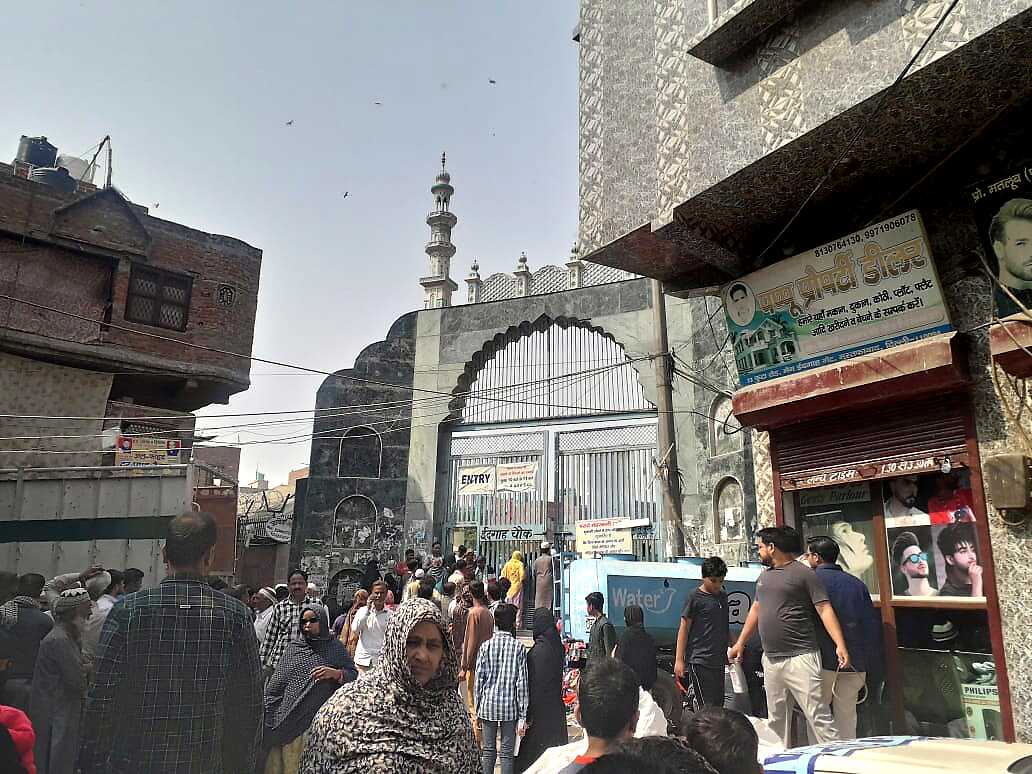
A crowd waiting for relief material oustide the Eidgah, which has been converted to a relief camp.
Persisting trauma can also cause other anxiety disorders like separation anxiety, phobic disorder, obsessive-compulsive disorder, generalised anxiety disorder, dissociative disorder and other major mental problems, Beniwal said, adding that the children’s past events automatically get linked to future events and trigger them.
Regarding the drastic change in behaviour in five-year-old Kashif, the doctor said, “Not everyone shows the same symptoms. Especially for this child, he is clearly in shock. If a child becomes completely opposite of his character, it’s a clear sign of psychological shock.”
As News18 enquired about the possibilities of future psychological complications that little Sama may face, he said, “Her father’s murder is a trauma-inducing event in life. In future, there can be psychotic, manic depressive or schizophrenic episodes. They may forget things now, but later it can become a source of psychological disorders as they begin to connect the dots gradually with adolescence.”
Coping Mechanism
Healing is pivotal in mitigating the impact of terror in children as the sudden change of the peaceful environment is difficult to accept. Here comes the role of timely therapeutic intervention, an important aspect of relief, rehabilitation, reconstruction and reconciliation, said Dr Beniwal.
“Timely counselling of children and their parents is key to the process of healing. We must understand that their parents are also victims of the same riot, hence, we need to be imparting psychoeducation and therapy to them, and they can then help the children to cope. The child victims must be counselled at the earliest,” he said.
However, for immediate and temporary relief, constant engagement any type of activity is vital, he said. “At the moment, it is advisable that children don’t stay alone and are kept busy in constructive activity and in games of their choice. They should be encouraged to share their experiences and keep interacting with others because when you keep it within yourself, you seethe. When you share, you involve other people in your pain, it acts like catharsis. Besides, they must be indulged in physical activities including yoga, pranayam,” Dr Beniwal said.
The effort should not be to sweep the matter under the rug or suppress the pain, but to confront it and slowly battle it out by taking help from professionals and loved ones, he added.
The psychiatry expert explained the role of the government in facilitating counselling sessions for these riot-hit children. “The government must take the initiative to motivate the adult victims to consult for better mental health, along with their children," he said. "It’s like a physical wound. If you ignore it becomes septic and spreads all over your body. It also has multiple effects on the society as whole."
(All names of the child victims have been changed as per guidelines)











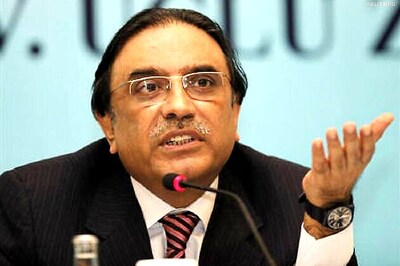
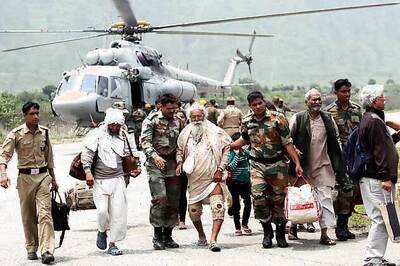

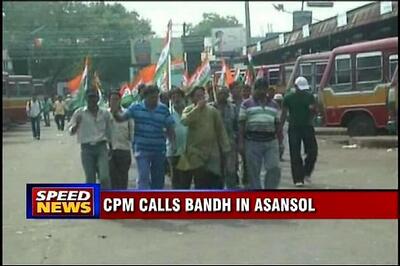




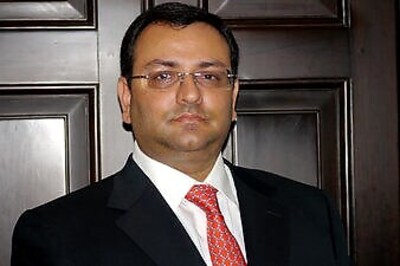
Comments
0 comment